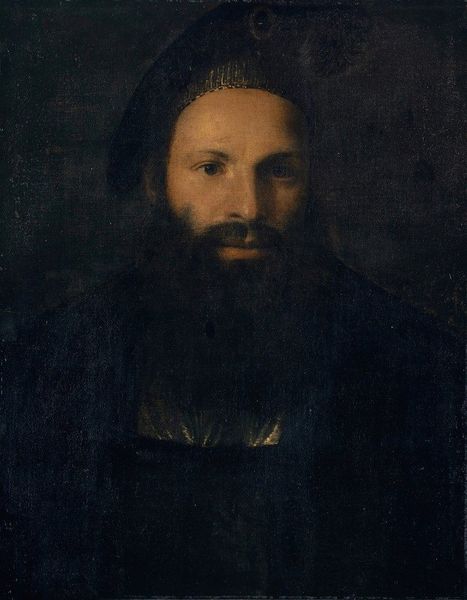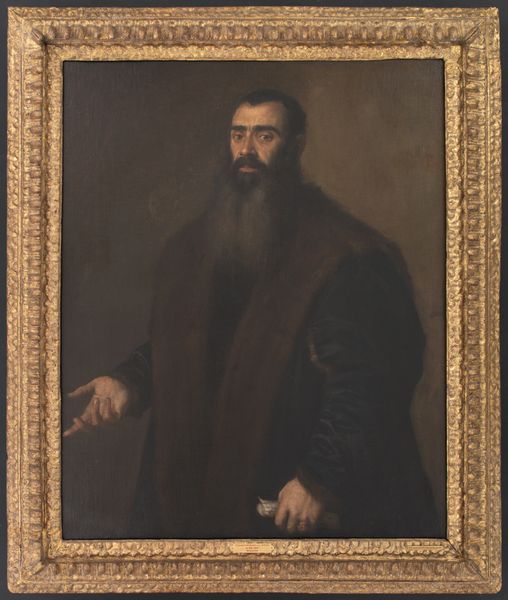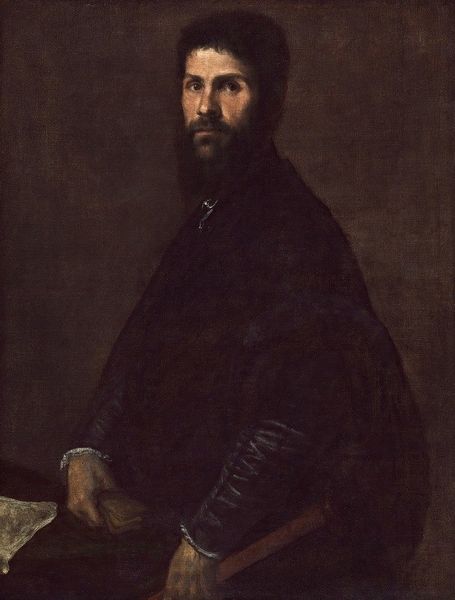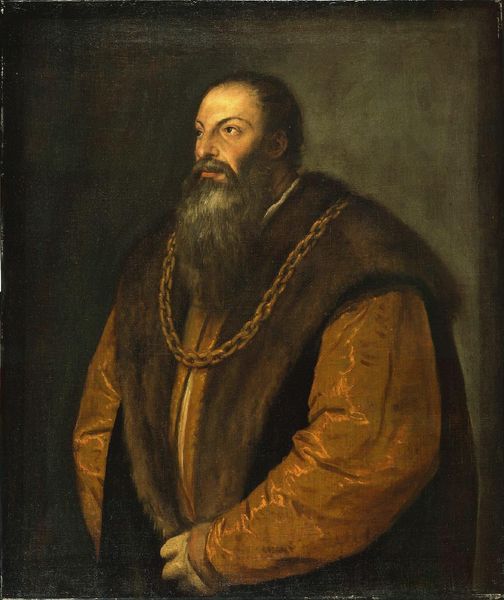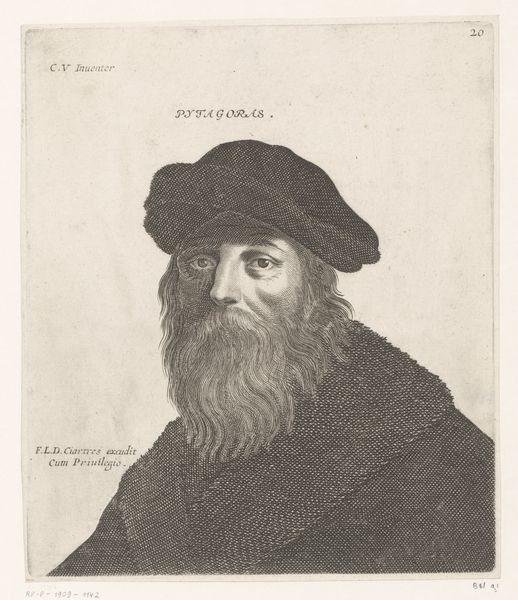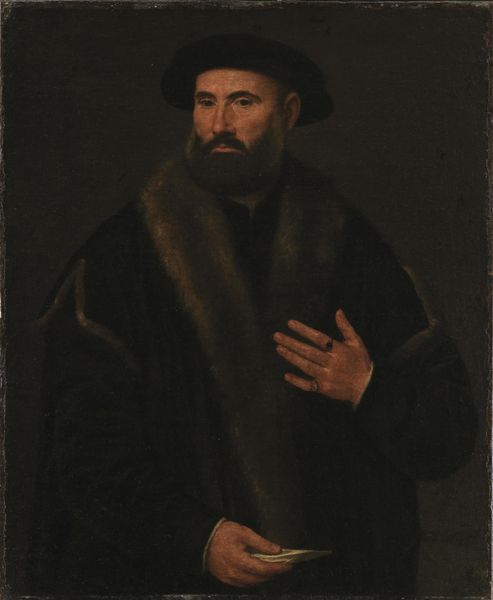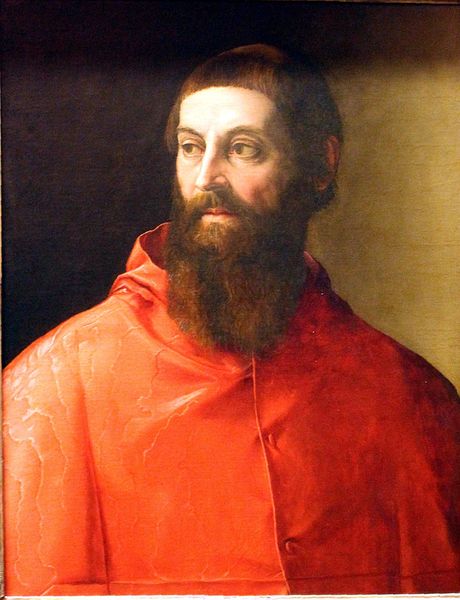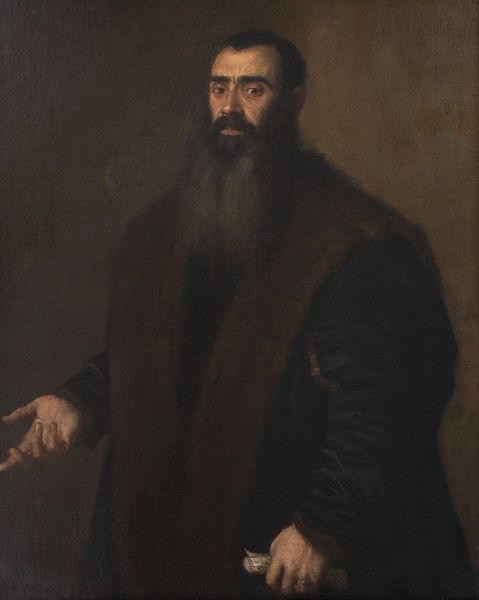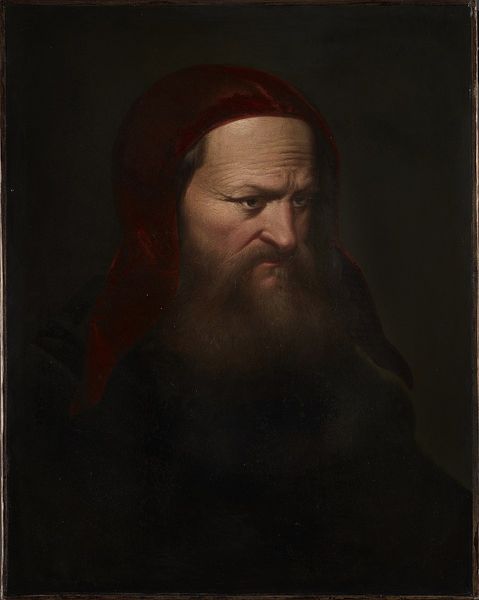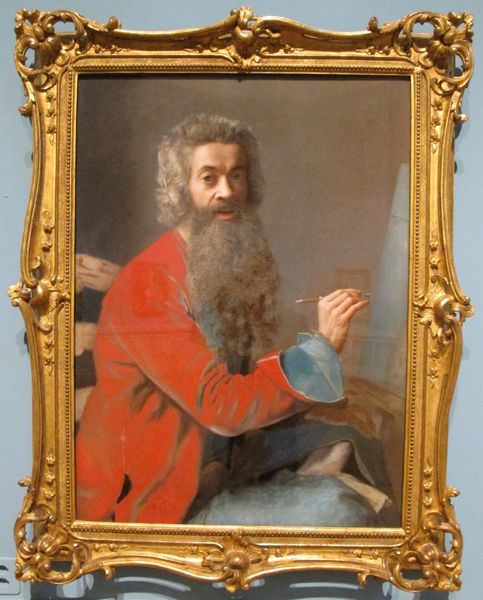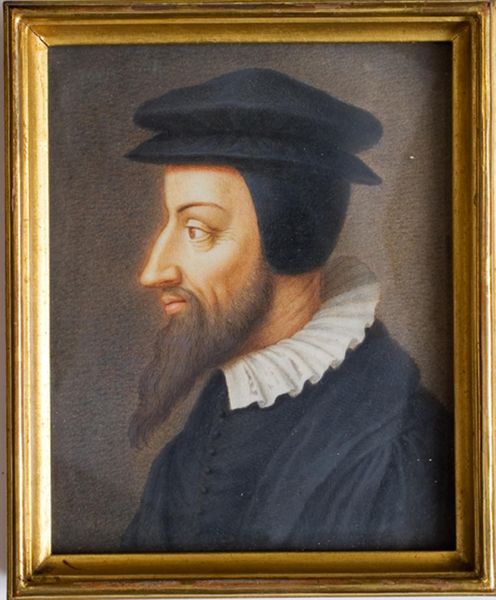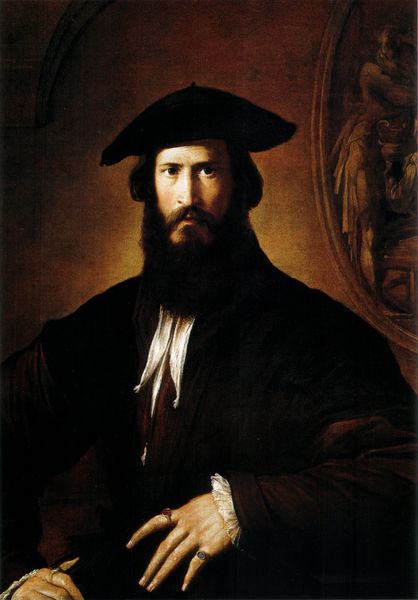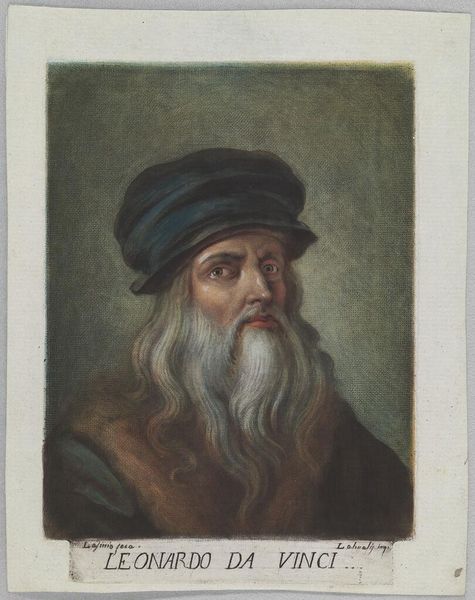
Portrait of a Prelate
0:00
0:00
francescoderossifrancescosalviaticecchino
Finnish National Gallery, Helsinki, Finland
oil-paint
#
portrait
#
oil-paint
#
mannerism
#
oil painting
#
academic-art
Copyright: Public domain
Editor: Here we have "Portrait of a Prelate," attributed to Francesco Salviati. It's an oil painting, and I find it incredibly intense. There's something about the darkness contrasting with the subject's face that is so captivating. What do you see in this piece? Curator: I see a rigorous exercise in geometric forms. Observe the planar hat, its stark angles mirrored in the sitter's sharp gaze and echoed even in the triangular shape of the beard. Consider the limited palette, the dominance of blacks and browns. Editor: So you’re seeing the structure first, rather than the person portrayed? Curator: Precisely. The portrait functions primarily as a study in contrasts. The stark planes of the sitter's garb create tension with the softer modelling of the face. Light catches the brow, cheek and nose – guiding our gaze. Even the impasto contributes, enlivening the otherwise muted surface. What of the formal relations between figure and ground? Editor: Well, there’s very little to distinguish them. He almost seems to emerge from the darkness. Is that intentional, perhaps highlighting his importance or authority? Curator: Interesting interpretation, but I think it may simply be the product of a painter interested more in formal problems than psychological depth. I'd even go so far as to suggest that, in effect, the darkness amplifies his being as one unified composition with minimal details. The emphasis lies more in the geometric composition than biographical revelation, do you not agree? Editor: That's a perspective I hadn't considered, focusing on the structural elements as the primary subject. I appreciate that breakdown! Curator: And I was intrigued to hear how you had a subjective experience of 'intensity,' confirming the art object still stimulates meaning in the contemporary audience.
Comments
No comments
Be the first to comment and join the conversation on the ultimate creative platform.
